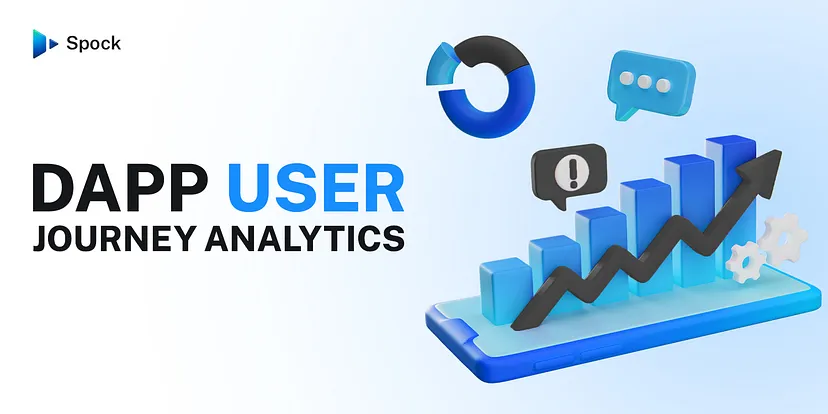
In the world of decentralized applications (dApps) in the web3 ecosystem, user journey data can be an invaluable tool for creators looking to improve the user experience and drive adoption. By understanding how users interact with a dApp, creators can identify areas for improvement and optimize the user journey to make it as seamless and enjoyable as possible. In this article, we’ll explore the importance of user journey data for dApp creators and how it can help them create more successful dApps in the web3 ecosystem. So, what is user journey data and how can it be useful for dApp creators? In short, user journey data refers to the information collected about a user’s interactions with a dApp, from the moment they first discover it to the moment they complete the desired action (such as locking tokens or completing a task). This data can include metrics such as entering the dApp, connecting the wallet on the dApp, rejecting the transaction because of the high gas fee, and more. By analyzing this data, dApp creators can get a sense of how users are interacting with their dApp and identify any pain points or areas of confusion. There are several ways that user journey data can be used to improve the user experience for dApp users in web3. For example, if a dApp creator notices that a large number of users are abandoning the dApp after a certain point in the journey, they may want to investigate what’s causing this drop-off and make changes to the dApp to improve retention. This could involve making changes to the user interface, streamlining the sign-up process, or adding new features that make the dApp more engaging and useful for users. In addition to improving the user experience, user journey data can also be used to optimize the dApp for marketing and conversion. By understanding how users are interacting with the dApp, dApp creators can identify the most effective channels for attracting new users and the most effective ways to convert those users into paying customers. This can involve identifying the most effective landing pages, calls-to-action, and other marketing elements to ensure that the dApp is as successful as possible. Spock Analytics is a data platform that provides dApp creators with powerful data visualization tools to help them understand the user journey for their dApps. By tracking key metrics such as total connected wallets, dropped wallets, and transactions successful/rejected, dApp creators can get a clear picture of how users are interacting with their dApp and identify any areas of confusion or difficulty. Above is the user journey or as we call it “Wallet Journey” screen of Spock Analytics. For this article, we are using dummy data. The screen shows you 2 conversions at a first glimpse: This is the percentage of conversion of wallets that landed on your dApp and connected their wallets. 2. Wallet Connection — Transaction This percentage shows you of the wallets that connected to your dApp went all the way to perform a transaction. With a simple comparison between the two, you instantly can figure out that there is a problem with your product because 95% of visitors connected, and only 57.89% performed a transaction. The same scenario could be for your dApp or vice versa. Below the conversion rates, you can see a pie chart that shows the overall journey of the wallet from connection to performing your desired action. Each step shows the number of users that moved forward or left the dApp from a certain point. By keeping track of the drop, you can find out the bottleneck in the journey of your users. You can find the Wallet Journey along with many other data about the wallets connected to your dApp as transactions performed, token utilization, and many more once you integrate Spock Analytics in your dApp. Visit https://spockanalytics.xyz and use our free demo or read our litepaper to understand more about Spock. In conclusion, user journey data is an essential tool for dApp creators in the web3 ecosystem. By understanding how users are interacting with their dApp, creators can identify areas for improvement and optimize the user journey to create a better experience for users. By using Spock Analytics to gather and nurture this data to drive marketing and conversion efforts, dApp creators can increase the chances of success for their dApp.
Signup for The Vulcan Voice newsletter now and stay ahead of the curve!